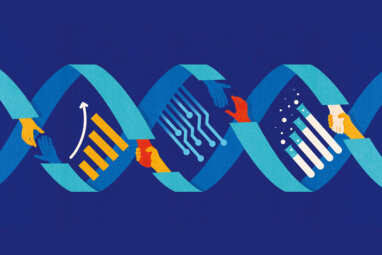Unintended Outcomes of Patent Policy
Topics
Enacted in 1980, the Bayh-Dole Act provides academic institutions with incentives to patent research findings, greatly increasing university patent applications and efforts to transfer these high-tech advances to private-sector firms. However, a case study published in the December 2002 issue of the Milbank Quarterly, titled “Patents and Innovation in Cancer Therapies: Lessons From CellPro,” points out the practical problems with applying the statute.
Authors Avital Bar-Shalom, an American Association for the Advancement of Science risk policy fellow, and Robert Cook-Deegan, director of the Duke University Center for Genome Ethics, Law and Policy, suggest that the difficulties in transferring these patents (and their accompanying technological advances) from universities to industry can hinder the prompt translation of promising research into value for industry and consumers.
According to the authors, the Bayh-Dole statute had its intended effect, increasing the number of academic patents and licenses. However, they write, “It has also had second-order effects which have received less attention because information about licensing is not publicly available and few scholars have studied it.” Their research highlights some key challenges of applying such a statue to ongoing research in the life science sector, which accounts for at least 70% of the patents and revenue that flow from federally funded research.
The article examines a dispute over technology that isolates stem cells from bone marrow for use in cancer treatment. In the late 1980s, Johns Hopkins University received a broad patent for a new technology developed by one of its scientists and licensed it to Baxter Healthcare, which began to develop a cell-separation instrument. In 1989, CellPro, a biotechnology startup, developed a different antibody-based separation technique, based on research conducted at the University of Washington, and was close to bringing the product to market ahead of Johns Hopkins and Baxter Healthcare. Johns Hopkins University's lawsuit against CellPro for patent infringement in 1994 ultimately drove the startup out of business.
The authors state that the Johns Hopkins University filing followed accepted patent practice, in full compliance with the Bayh-Dole statute, by asserting a far broader range of intellectual property than its researcher could ever have claimed. This raises serious questions, say the authors, about whether the statute promotes commercial activity in the public interest by permitting needed products to reach the market promptly. “The main question is whether universities have responsibilities beyond pure commercialization for inventions arising from federally funded research,” the authors write.
To begin tweaking the Bayh-Dole statute, Bar-Shalom and Cook-Deegan offer four options for the U.S. Congress to consider, including changing the powers of government agencies (like the National Institutes of Health) to intervene in patent issues, creating a research exemption from patent infringement, permitting petitions for reexamination of patents, and increasing the transparency of how patent rights arising from federally financed research and development are licensed and used.




